Venus volcano: First direct evidence of recent eruption discovered on 'Earth's twin'

Direct Imaging: One of the ways to find a planet
Astronomers can take pictures of planets outside of our solar system by using a method called "direct imaging." It involves removing the overwhelming glare of the star the planets orbit. (Courtesy: NASA)
For the first time, researchers found recent geological evidence of volcanic activity on Venus. Scientists had suspected that the planet was volcanically active but could never find direct evidence.
An upcoming mission called Venus Emissivity, Radio science, InSAR, Topography and Spectroscopy (VERITAS), prompted one researcher to take a look at radar images taken by the Magellan mission 30 years ago. The original data was stored on CDs and shipped to other researchers by mail.
"I didn’t really expect to be successful, but after about 200 hours of manually comparing the images of different Magellan orbits, I saw two images of the same region taken eight months apart exhibiting telltale geological changes caused by an eruption," said Robert Herrick, a member of the VERITAS science team.
WHAT A TOXIC INFERNO LIKE VENUS CAN TELL US ABOUT EARTH
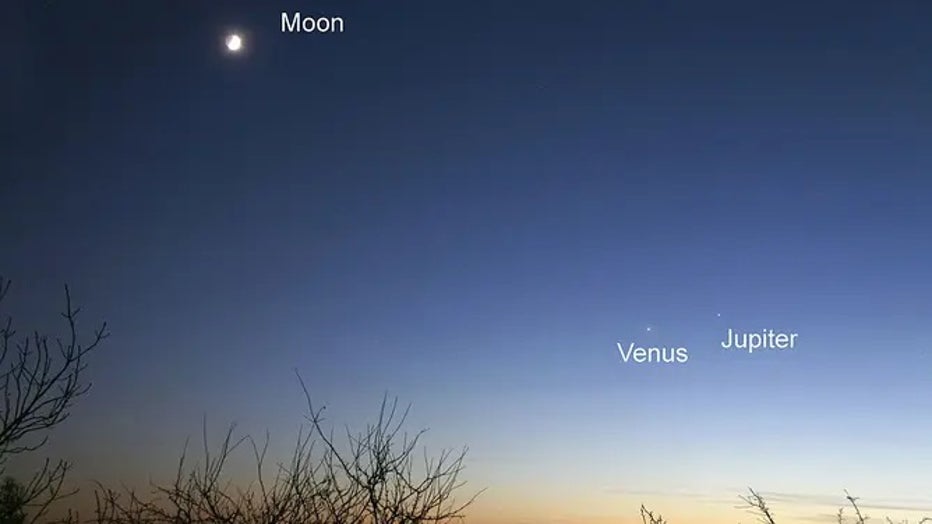
A crescent moon hangs in the sky above Venus (on the left) and Jupiter in the evening sky on December 3, 2008. (Jamie Cooper/SSPL / Getty Images)
The area he focused on is near the equator and two of the planet’s largest volcanoes. Herrick discovered a volcanic vent associated with the Maat Mons Volcano that changed between February and October 1991.
In February, the vent appeared circular, covering less than a square mile, said NASA. The size of the vent almost doubled by October and appeared to be filled with a lava lake, and the exterior showed evidence of lava running downhill from the vent.
HUBBLE TAKES FAMILY PHOTO OF SOLAR SYSTEM'S GIANT PLANETS
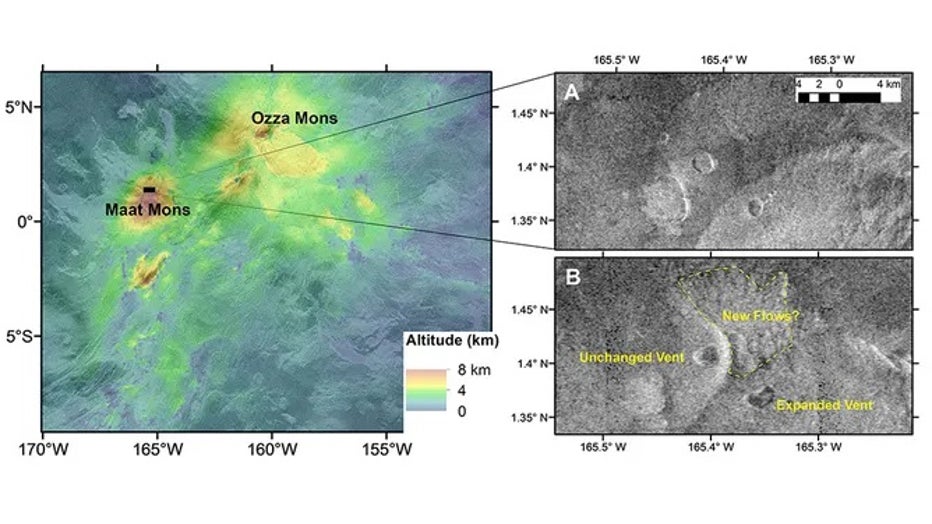
Altitude data for the Maat and Ozza Mons region on the Venus surface is shown at left, with the area of study indicated by the black box. At right are the before (A) and after (B) Magellan observations of the expanded vent on Maat Mons, with possible
Herrick compared the lava flow to the 2018 Kilauea eruption in Hawaii.
"Scientists study active volcanoes to understand how a planet’s interior can shape its crust, drive its evolution, and affect its habitability," explained a NASA statement.
Scientists also want to know why Venus completely resurfaced itself recently through volcanic activity. Herrick explains in the study that its average surface age could be as little as tens of millions of years old. That is very young in geologic time.
VERITAS is scheduled to launch within the decade. The goal is to study Venus from surface to core. The findings, researchers hope, will explain how Venus became Earth’s "evil twin."
Earth's evil twin
Venus, is often called Earth’s twin because it is close to the same size and density as our planet and formed in the same inner part of the solar system, according to NASA. Our closest planetary neighbor is also one of only four planets made of the same material, rock and metal.
NASA'S NEXT EARTH MISSIONS WILL MONITOR EXTREME WEATHER, TAKE FIRST GLOBAL SURVEY OF SURFACE WATER
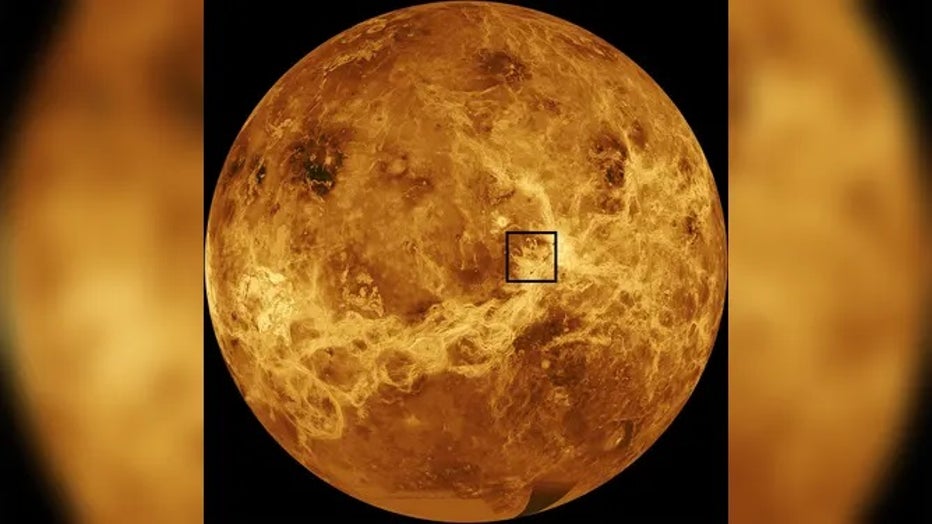
This annotated, computer-simulated global map of Venus’ surface is assembled from data from NASA’s Magellan and Pioneer Venus Orbiter missions. Maat Mons, the volcano that has exhibited signs of a recent eruption, is within the black square near the
But Venus is an evil twin.
"What happened is somewhere along the way, they went two very different paths," said NASA scientist Lori Glaze. "Some people like to say Venus went bad or something went wrong. I like to say that somewhere along the way, something good happened on Earth."
Venus is surrounded by a thick, toxic atmosphere filled with carbon dioxide and sulfuric acid clouds. The gasses trap the heat in a "runaway greenhouse effect," said another NASA scientist.
"In fact, it's so hot on Venus that you can melt lead. The temperatures on the surface of Venus are over 900 degrees Fahrenheit, and then Venus is covered in a 15-mile-thick layer of clouds," explained Glaze. "And those clouds are made of sulfuric acid. So it is a crazy place, but really interesting."
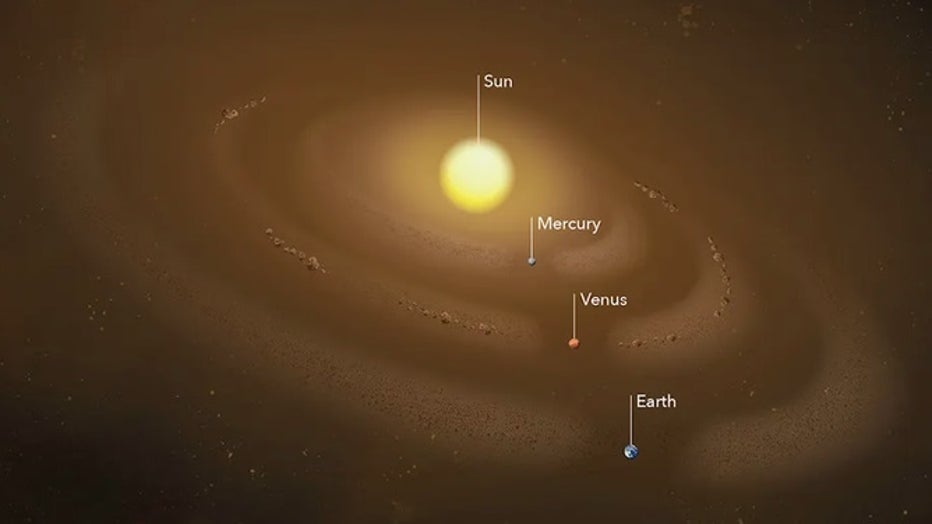
In this illustration, several dust rings circle the Sun. These rings form when planets’ gravities tug dust grains into orbit around the Sun. Recently, scientists have detected a dust ring at Mercury’s orbit. Others hypothesize the source of Venus’ du
The air pressure on Venus’ surface is similar to that of a mile deep in the ocean. That is 90 times more than on Earth.
The goal of the VERITAS mission
VERITAS will measure Venus’ gravitational field to try to learn what makes up the planet’s interior. Radar and a spectrometer, analyzing electromagnetic radiation, will offer clues about what makes up the crust.
According to computer modeling by NASA's Goddard Institute for Space Studies, Venus may have had a shallow ocean and habitable surface temperatures in the first 2 billion years of its history. Scientists hope to find out what changed that.
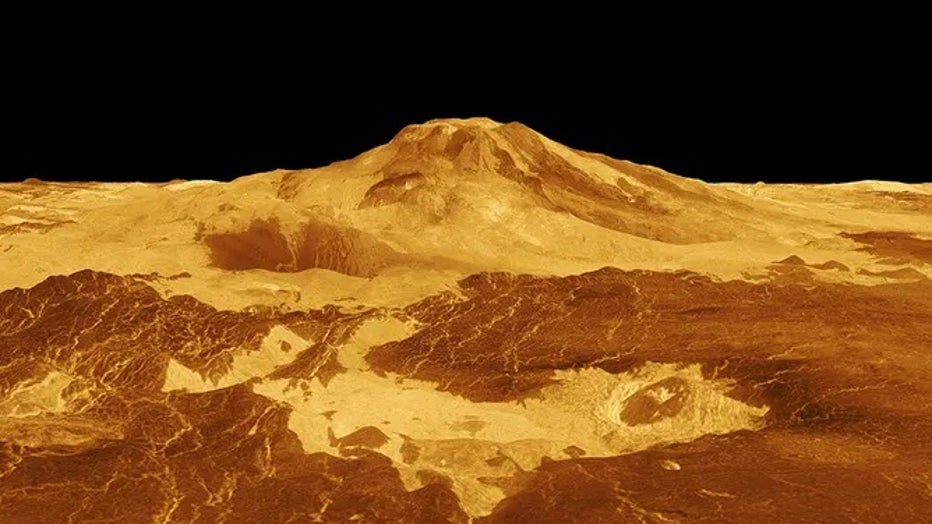
This computer-generated 3D model of Venus’ surface shows the summit of Maat Mons, the volcano that is exhibiting signs of activity. A new study found one of Maat Mons’ vents became enlarged and changed shape over an eight-month period in 1991, indica
"Using cutting-edge technologies that NASA has developed and refined over many years of missions and technology programs, we’re ushering in a new decade of Venus to understand how an Earth-like planet can become a hothouse," said Thomas Zurbuchen, NASA’s associate administrator for science, in a statement about the VERITAS mission.
He called the goals of the mission profound and extending into an emerging area of research for NASA.

